Sauermann Si-RVP3 Handleiding
Sauermann
Niet gecategoriseerd
Si-RVP3
Bekijk gratis de handleiding van Sauermann Si-RVP3 (11 pagina’s), behorend tot de categorie Niet gecategoriseerd. Deze gids werd als nuttig beoordeeld door 3 mensen en kreeg gemiddeld 4.7 sterren uit 2 reviews. Heb je een vraag over Sauermann Si-RVP3 of wil je andere gebruikers van dit product iets vragen? Stel een vraag
Pagina 1/11

English
User manual
WARNING
Symbols used
For your safety and in order to avoid any damage of the device, please follow the procedure
described in this user manual and read carefully the notes preceded by the following symbol:
DO NOT ATTEMPT TO OPERATE WITHOUT USING OIL!
Use oil specically rened for Deep Vacuum Pumps. Use of oil not rened for Deep
Vacuum Pumps and/or operating with contaminated oil will void warranty.
1 Oil ll
This vacuum pump has been tested at the factory and shipped with only trace amounts of oil.
OIL MUST BE ADDED BEFORE OPERATING! Failure to add oil will damage cartridge and void warranty!
1. Make sure the oil drain valve located below the front casing is closed before attempting to add oil.
2. Remove the exhaust mufer from the top of pump and insert the oil bottle into the exhaust port.
3. Slowly add oil until oil level rises to the top of the Oil Level Line. Do not overll with oil!
4. Replace exhaust mufer.
CAUTION:
To reduce the danger of electric shock, keep the pump indoors and do not expose to rain.
DANGER:
1. Receptacle shall be well grounded, or else electric shock may be caused. Should power cord or plug
require repair or replacement, do not use the pump. If you cannot fully understand grounding instructions
and have doubt whether correct grounding is made, check with a professional electrician or service man. Do
not change the structure of attached adapter connector.
2. When pulling out power plug, make sure to pull the plug rather than the wire.
3. Do not place anything on the power cord. It may damage the wire.
4. Do not use broken plug or socket.
5. Do not pull out power plug with wet hand.
6. Do not pull out, insert power plug or turn on power switch where ammable gases may be present.
1. Wear safety glasses
2. Do not evacuate combustible, explosive or poisonous gases.
3. Do not evacuate gases that corrode metal or react chemically with pump oil.
4. The temperature of evacuated gas shall not exceed 80 °C (176 °F) and ambient temperature shall be
5 - 60 °C (41 - 140 °F) in order to perform at maximum capacity.
5. Do not operate without oil.
6. Pump and motor can be extremely hot to the touch in high ambient temperature conditions.
7. Do not block vacuum pump exhaust.
2 Checking oil level
1. Open the gas ballast valve (small brass tting located next to the handle) one turn.
2. Start pump and run with intake port capped for about two minutes. Observe the oil level with the
pump running. The oil level in the sight glass should be even with the level line.
3. If the level is low, open the intake port and run pump for 15 seconds, stop pump and observe oil level
again. Add a small amount of oil as needed.
3 Gas ballast valve
The gas ballast valve must be opened 1/4 turn for the rst part of the evacuation procedure. This will help
to eliminate moisture and extend the life of the vacuum pump. After about two minutes close the valve
and continue the evacuation procedure to reach ultimate vacuum. Failure to close the valve completely
during the nal evacuation will result in high vacuum reading.
During the rst stages of evacuation, vapors are highly concentrated. Unfortunately, some vapors will
condense into a liquid and mix with the oil, thus reducing the oil’s ability to produce a deep vacuum.
The GAS BALLAST VALVE emits a controlled amount of dry air into the pump during compression to
minimize this effect and keep oil relatively clean during the rst part of the evacuation.
Periodically remove the Gas Ballast Valve Needle and clean or replace the O-ring. Clean mating surfaces
and lightly coat with vacuum pump oil before securely re-tightening.
4 Changing oil
In order to reach the deep vacuum required, your vacuum pump needs clean, moisture-free oil during
evacuation. Dirty oil becomes a mixture of corrosive acids and water that effects the pump’s ability to
pull a deep vacuum. Left sitting in the pump, this sludge will rust and erode internal surfaces shortening
the pump’s life.
Care should be taken to avoid contact of oil with skin or eyes. OIL MAY BE HOT! Used oil should be
properly disposed of in a leak-tight corrosion-resistant container according to local regulations.
1. After every evacuation, while the pump is warm and oil is thin, take a small sample of oil from the drain port.
2. If the oil is contaminated, drain the oil by placing the pump on a level surface and opening the oil
drain valve. Catch the waste oil in a container and properly dispose of it.
3. If the pump has been sitting for more than one month, the oil is considered contaminated regardless
of appearance and should be changed as outlined above.
4. To add oil, close drain, remove the exhaust mufer, ll to the Oil Level Line with fresh oil and replace
the exhaust mufer.
Oil features: Viscosity (cSt) at 40 °C: 46 +/- 10% / Density at 20 °C (g/cm
3
): 0.86 - 0.87 /
Pour point °C (°F): -18 °C (0 °F).
5 Intake connections
After use, replace all caps and nger-tighten. Do not use caps with damaged or missing O-rings and
always store vacuum pump with capped ports to prevent dirt and moisture contamination.
6 Pump motor
The PUMP and OIL must be above -1 °C (30 °F). The line voltage must be equal to the rating on the
motor nameplate ±10%. Normal operating temperature is approximately 71 °C (160 °F), which is HOT
to the touch! Line voltage and ambient temperature will affect the normal operating temperature. Your
vacuum pump is designed for continuous duty and will run for extended periods without overheating.
The motor has an automatic resetting overload protection feature. If the motor will not restart the pump
after shut-off, it may have opened the thermal protection. Disconnect the pump from the system, wait
about 15 minutes for the motor to cool down and then try again.
Designation Si-RVP1-220V Si-RVP3-220V Si-RVP1-110V Si-RVP2-110V
Oil capacity 250 ml / 8.5 oz. 440 ml / 15 oz. 250 ml / 8.5 oz. 440 ml / 15 oz.
Oil capacity
7 Solenoid valve and gauge (Si-RVP1-220V)
The solenoid valve opens when power to the vacuum pump is turned on. If the vacuum pump loses
power for any reason, the solenoid valve will close, preventing vacuum pump oil from backing up into
the system it is connected to. The vacuum gauge gives a rough indication of vacuum. It can be used
for leak testing by setting the pointer at the current vacuu level and leaving the system closed for an
extended period of time. For micron level readings, an electronic vacuum gauge (Sauermann Si-RV4) is
recommended.
WARNING: This product can expose you to chemicals including Di (2-ethylhexyl) phthalate,
lead and lead compounds, which are known to the State of California to cause cancer and
birth defects or other reproductive harm. For more information go to www.P65Warnings.ca.gov
Product specificaties
| Merk: | Sauermann |
| Categorie: | Niet gecategoriseerd |
| Model: | Si-RVP3 |
Heb je hulp nodig?
Als je hulp nodig hebt met Sauermann Si-RVP3 stel dan hieronder een vraag en andere gebruikers zullen je antwoorden
Handleiding Niet gecategoriseerd Sauermann
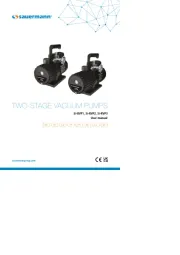
2 September 2025
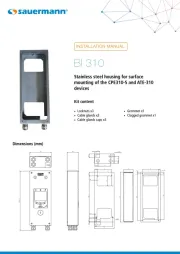
1 September 2025
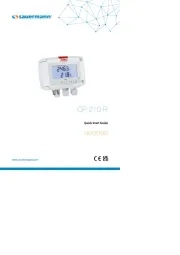
1 September 2025

1 September 2025
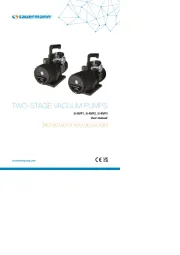
1 September 2025
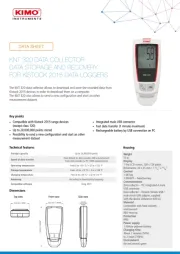
1 September 2025
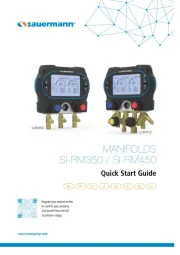
1 September 2025

1 September 2025
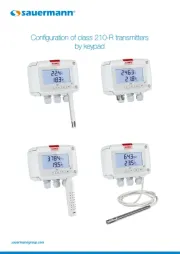
15 Augustus 2025
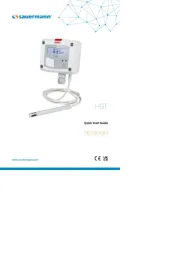
15 Augustus 2025
Handleiding Niet gecategoriseerd
- Eltra
- Tvilum
- EPEVER
- Murr Elektronik
- Tepro
- Hoymiles
- Dymo
- Duravit
- Python
- Nesco
- FeiYu-Tech
- Qriom
- Gurari
- Atika
- Trigano
Nieuwste handleidingen voor Niet gecategoriseerd
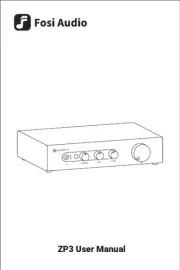
3 September 2025

3 September 2025
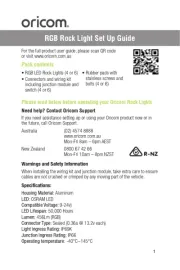
3 September 2025

3 September 2025
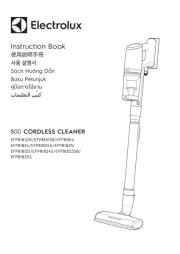
3 September 2025

3 September 2025
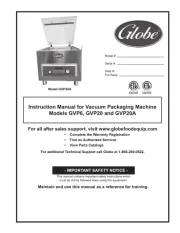
2 September 2025

2 September 2025

2 September 2025
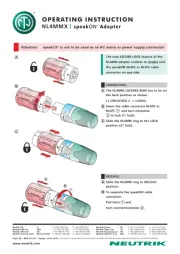
2 September 2025
